Why you can trust Tom's Hardware
Asus GeForce RTX 4060 Dual OC
Nvidia won't be making any RTX 4060 Founders Edition cards, leaving it up to the AIC (Add-In Card) partners to come up with appropriate designs. Obviously, with a base 115W TGP (Total Graphics Power), we shouldn't need any extreme designs to deal with the heat. Except, we'll probably still get them.
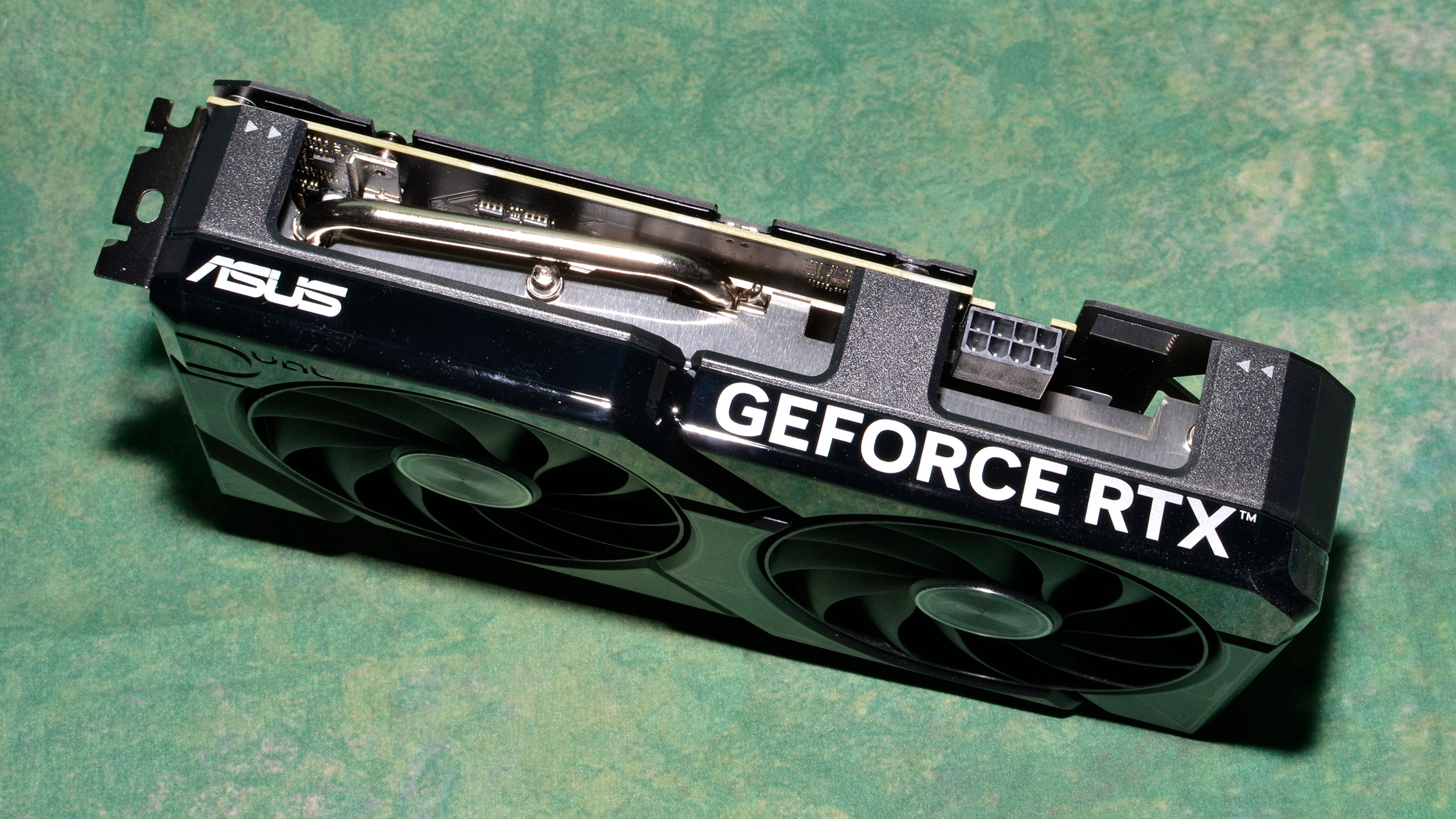
Case in point: The Asus RTX 4060 Dual OC that Nvidia sent us for the launch review. It's not a massive card, but it does occupy 2.5-slots of width, which effectively means you can't use the two adjacent slots. Not that it matters to most people, as these days graphics cards are one of the few expansion cards that are still in regular use. Additional M.2 slot adapters and USB 3.2 adapters are another possible use, along with video capture cards, but even those aren't particularly common.
The lack of an RTX 4060 Founders Edition means we're probably not going to see any cards using 16-pin power connectors, which is just fine by us. The Asus card has a single 8-pin connector, which on its own can provide 150W of power, never mind the 75W from the PCIe x16 slot. Even with a modest factory overclock, the Asus 4060 won't come anywhere near hitting those potential power limits.
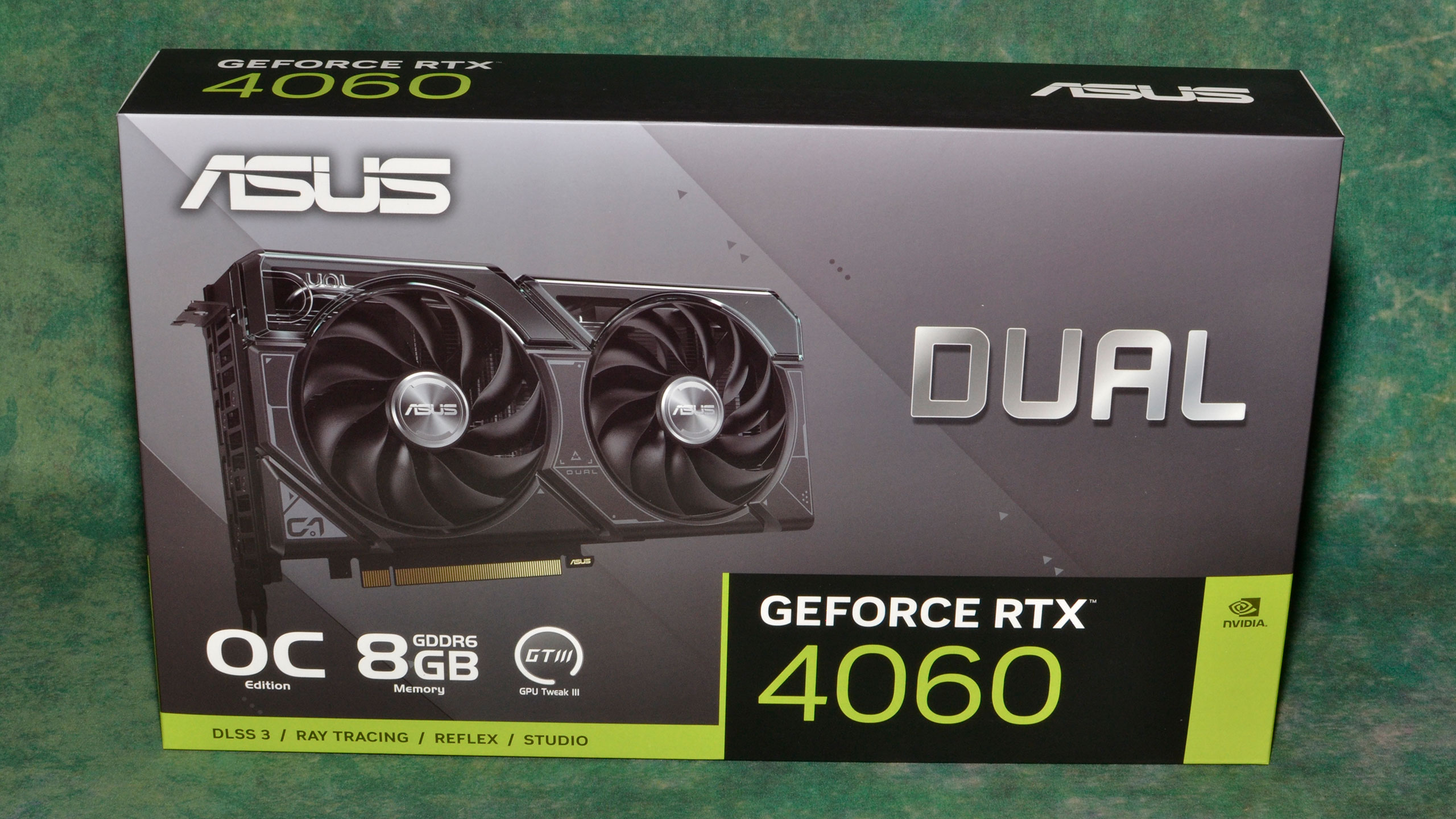
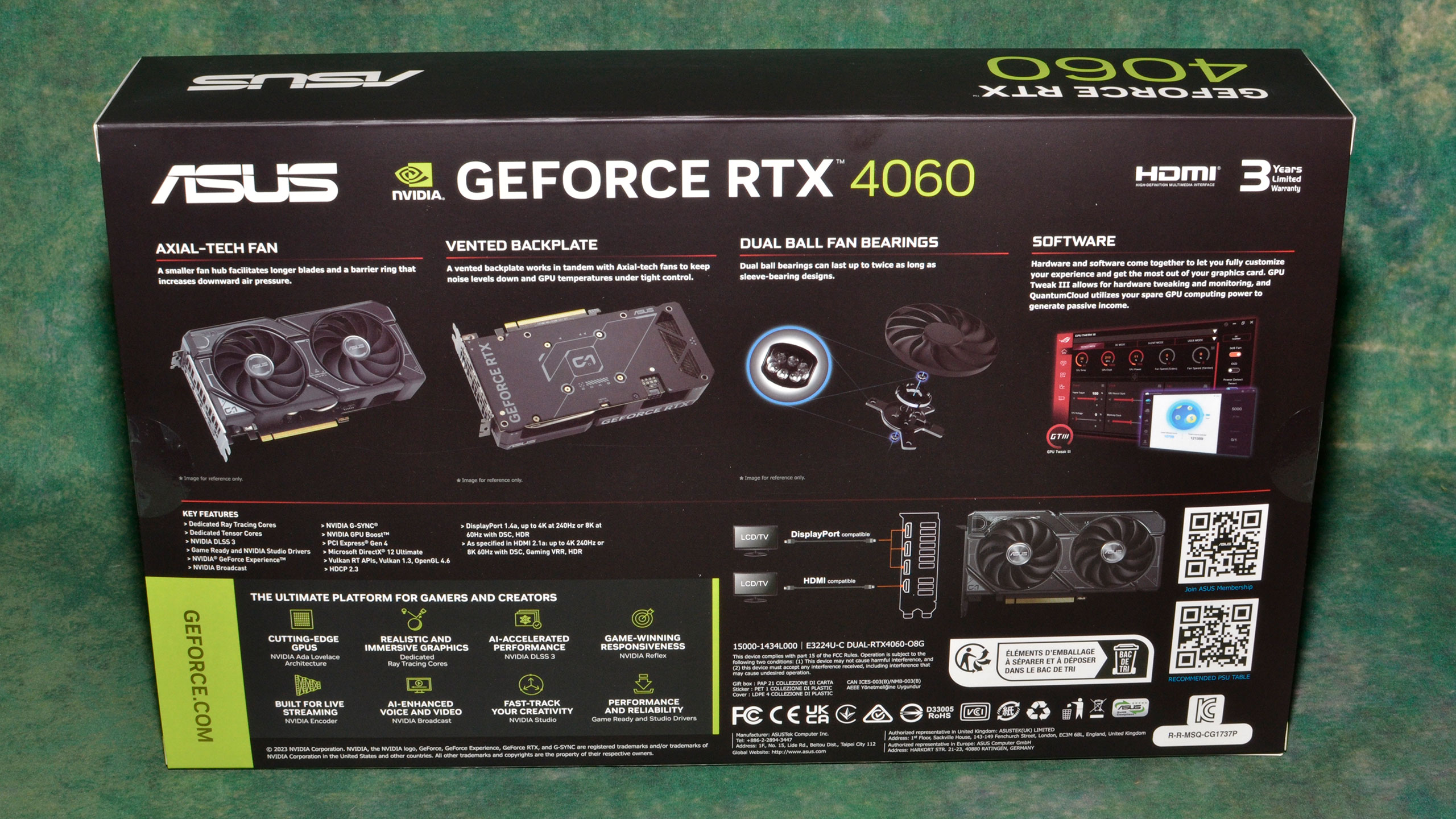
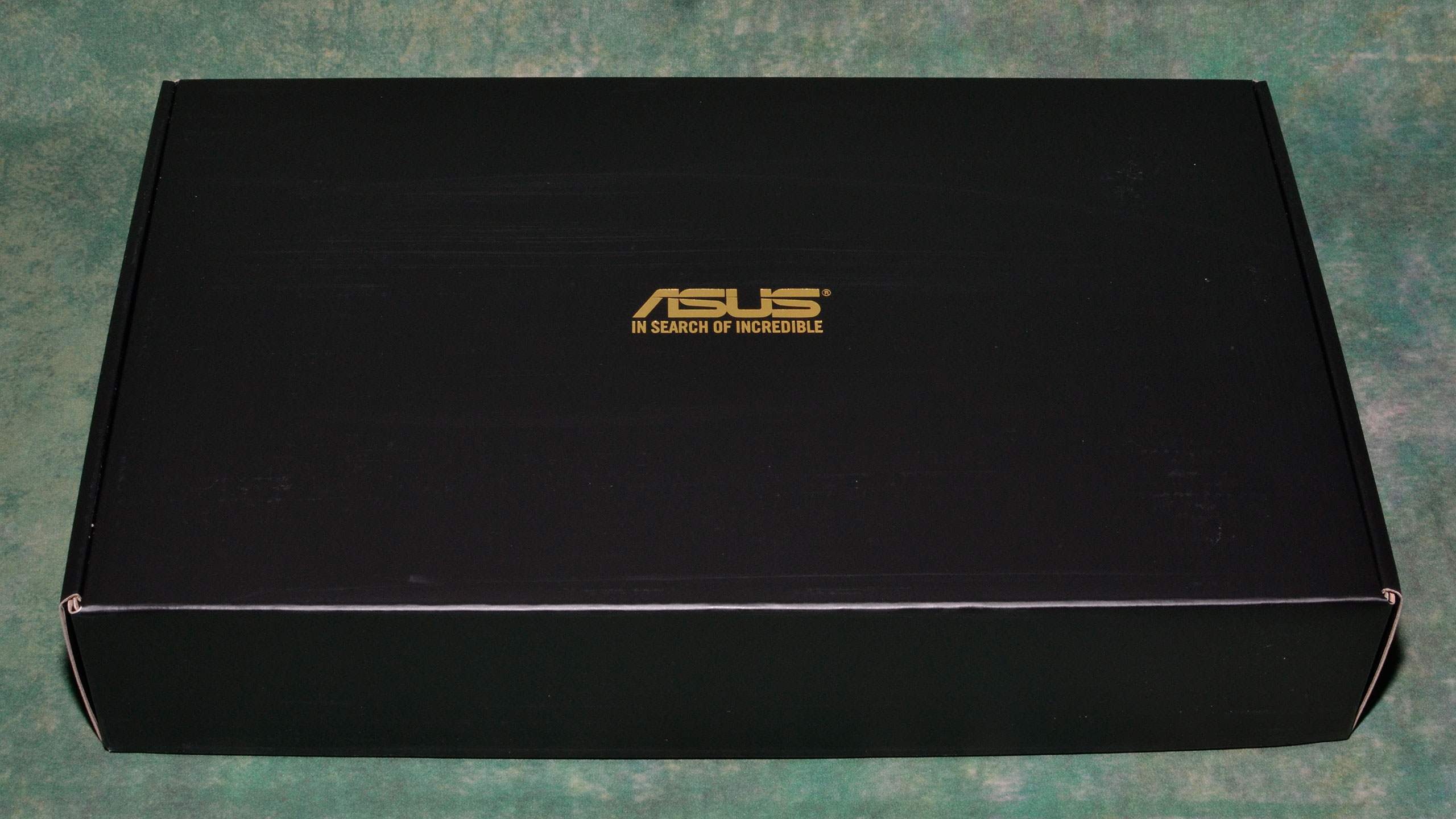

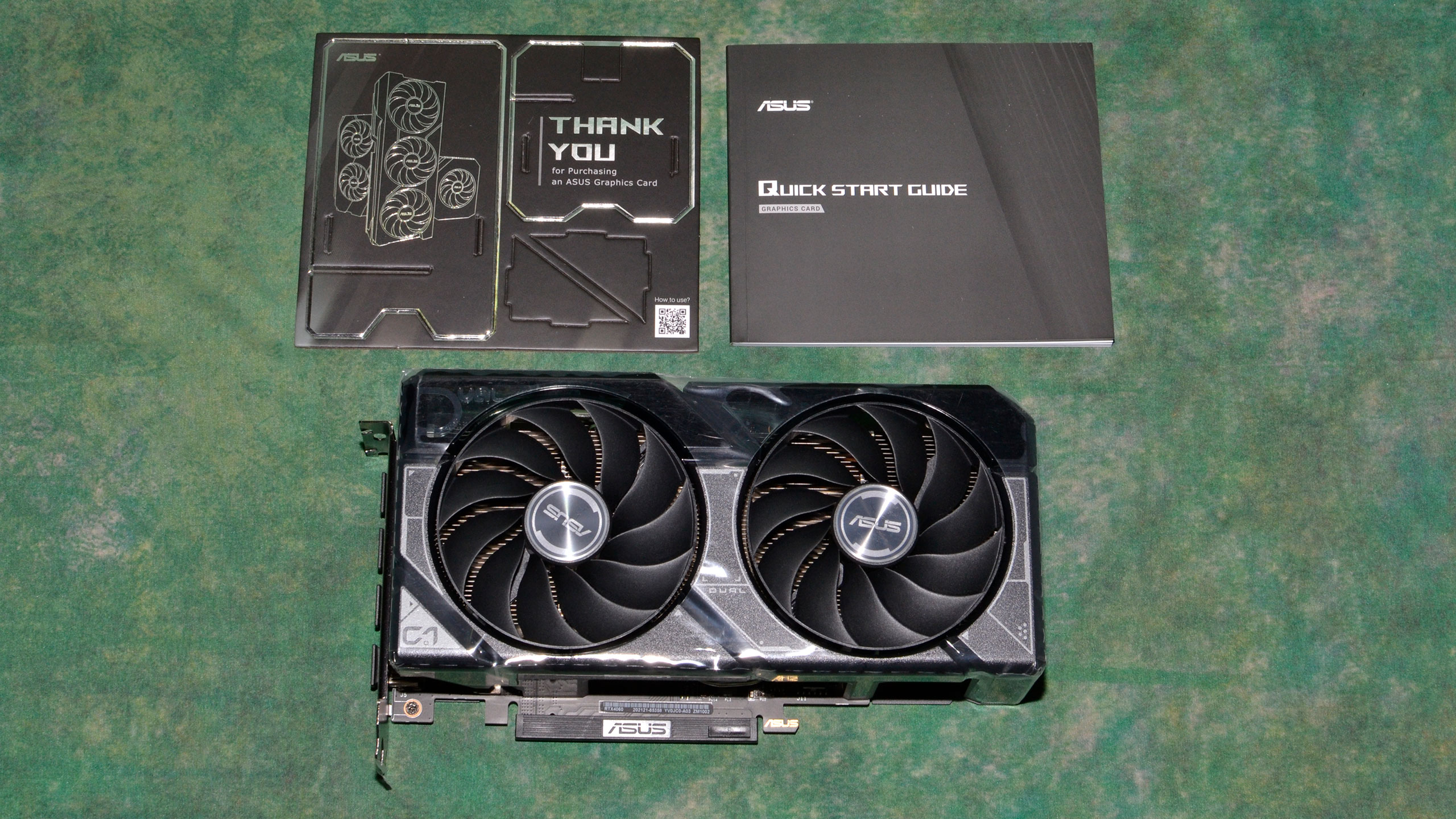
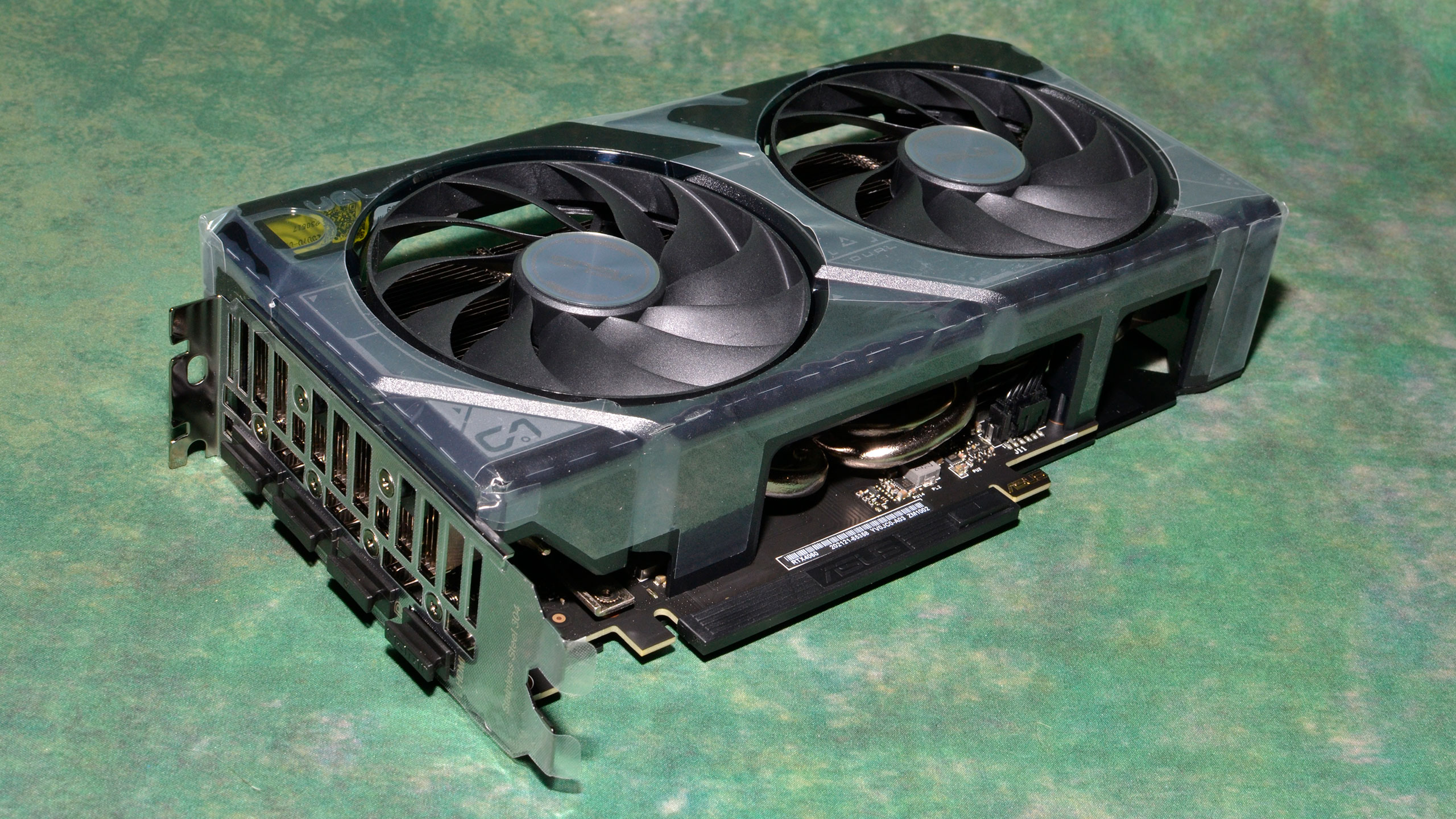
There's not much to say about the packaging for the Asus card, other than that there's a lot of empty space. It's the same box dimensions as we've seen with substantially larger triple-fan Asus cards, but there's probably a benefit to doing a "one size fits all" box.
Besides the card, you get a little cardboard punchout card holder and a small manual... and that's it. Not that we expected anything extra here.
The Asus RTX 4060 Dual OC measures 229x124x48 mm (our measurements), which is moderately compact even if it's a 2.5-slot width. It's also a rather light card, weighing in at 639g, so you shouldn't have issues with the card sagging. You can likely fit the card into many mini-ITX cases, provided they can accommodate the wider girth.
Asus uses two custom 89mm fans with an integrated rim, which should easily handle any cooling requirements when combined with the heatsink. The heatsink features four heatpipes, and in a nice change of pace, the fins are horizontally oriented so that air will flow out the IO bracket as well as the rear of the card, rather than out of the top and bottom of the card. That means it should dump less heat into the interior of your PC case.
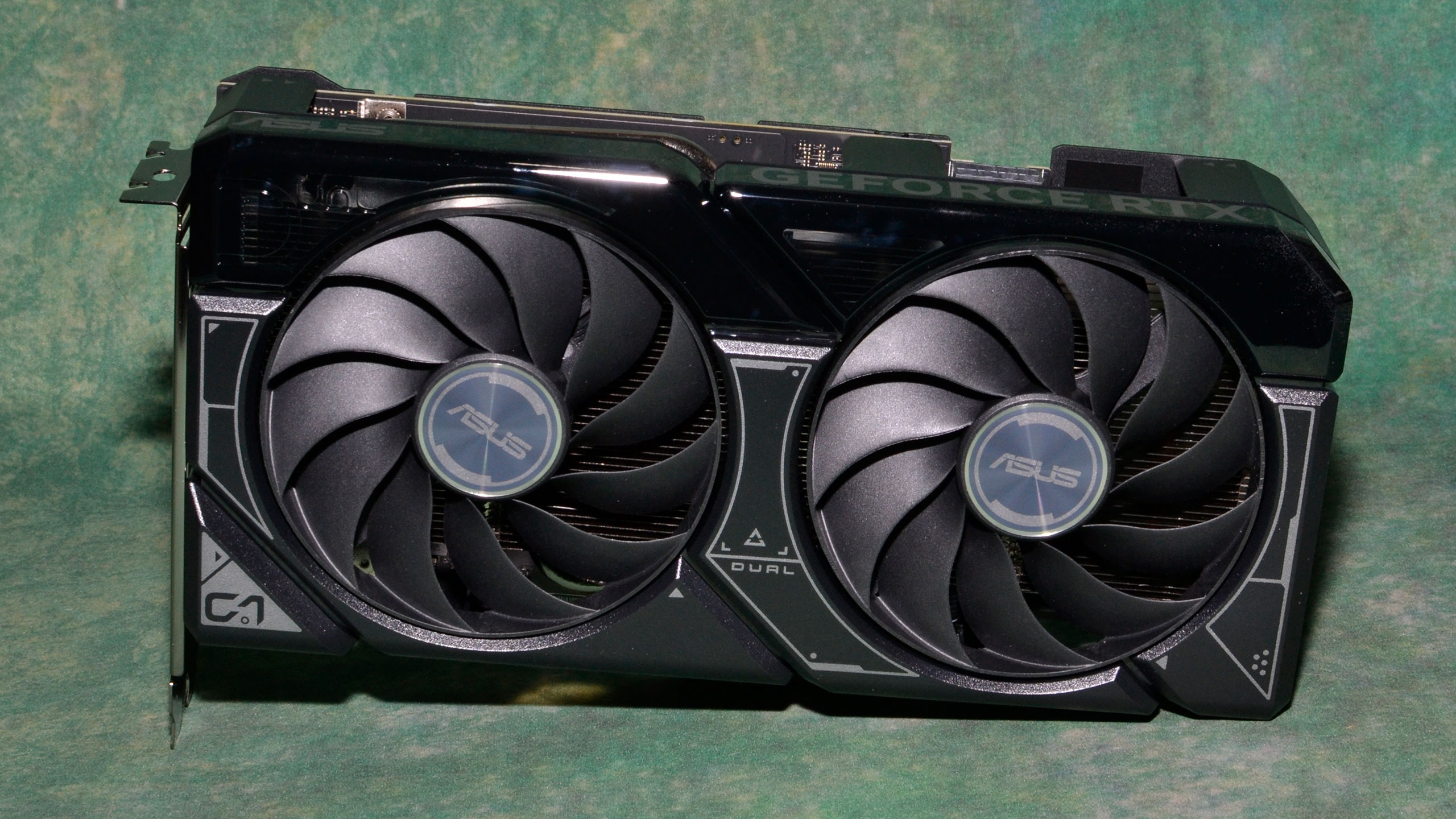
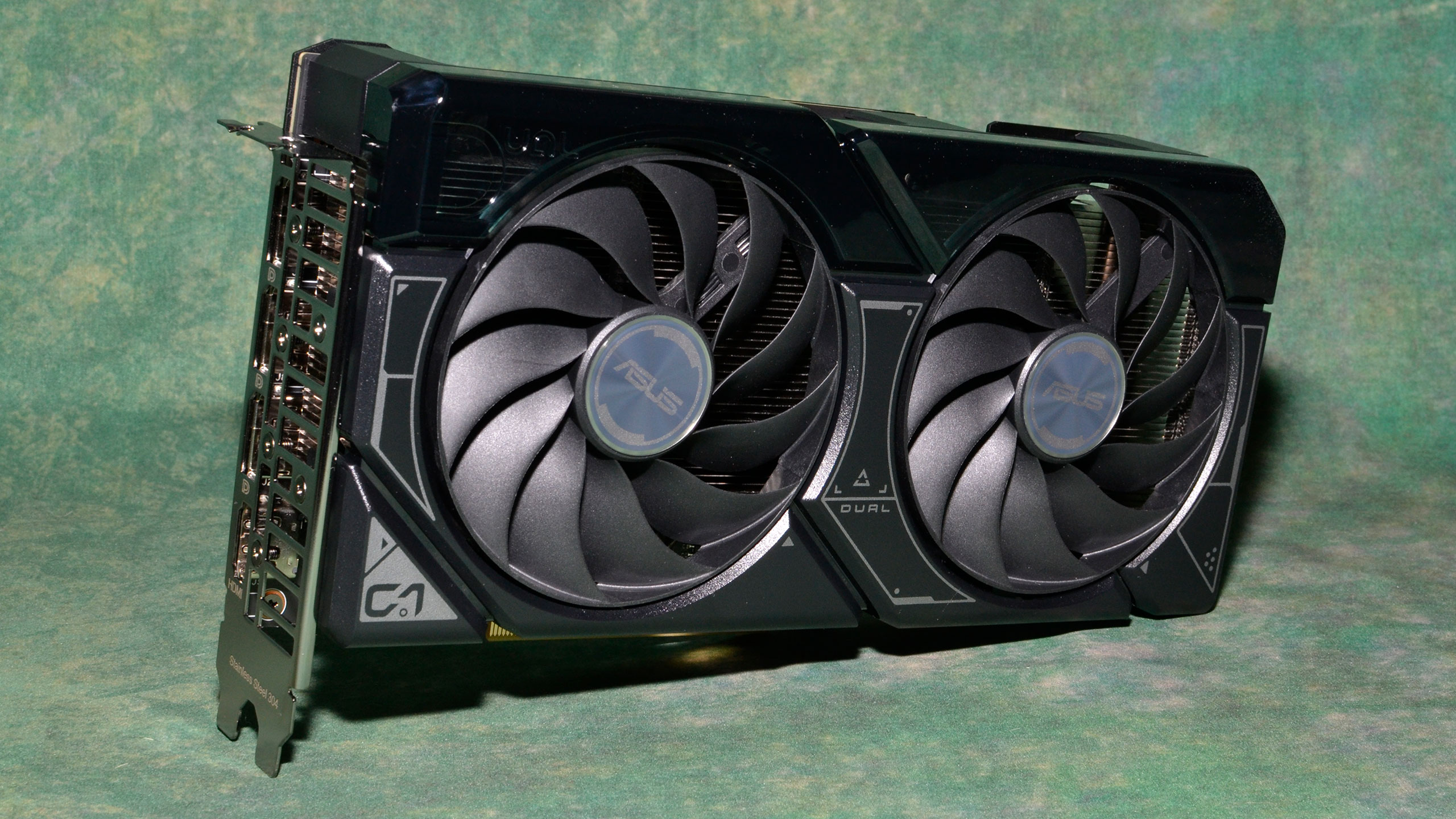

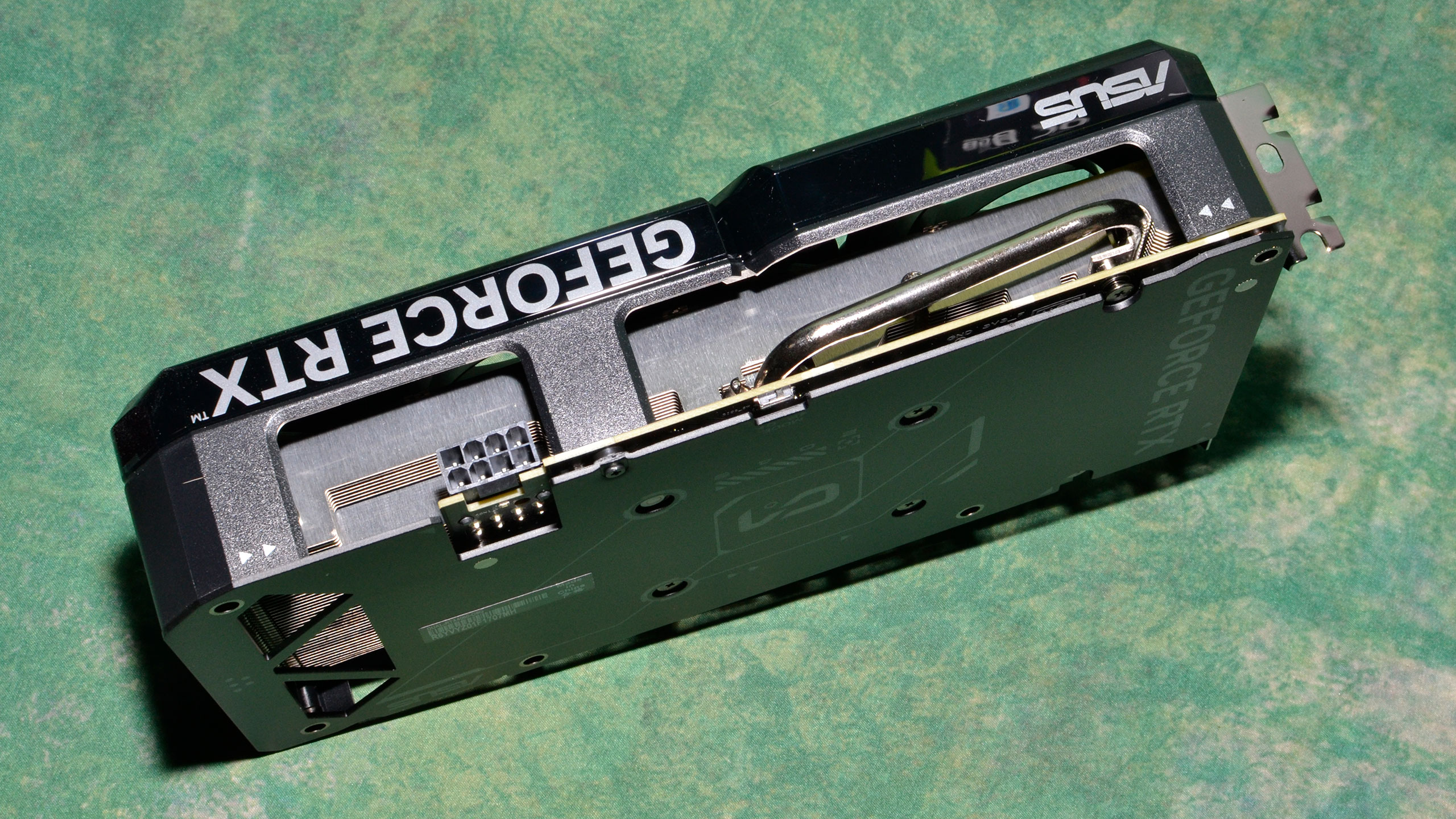
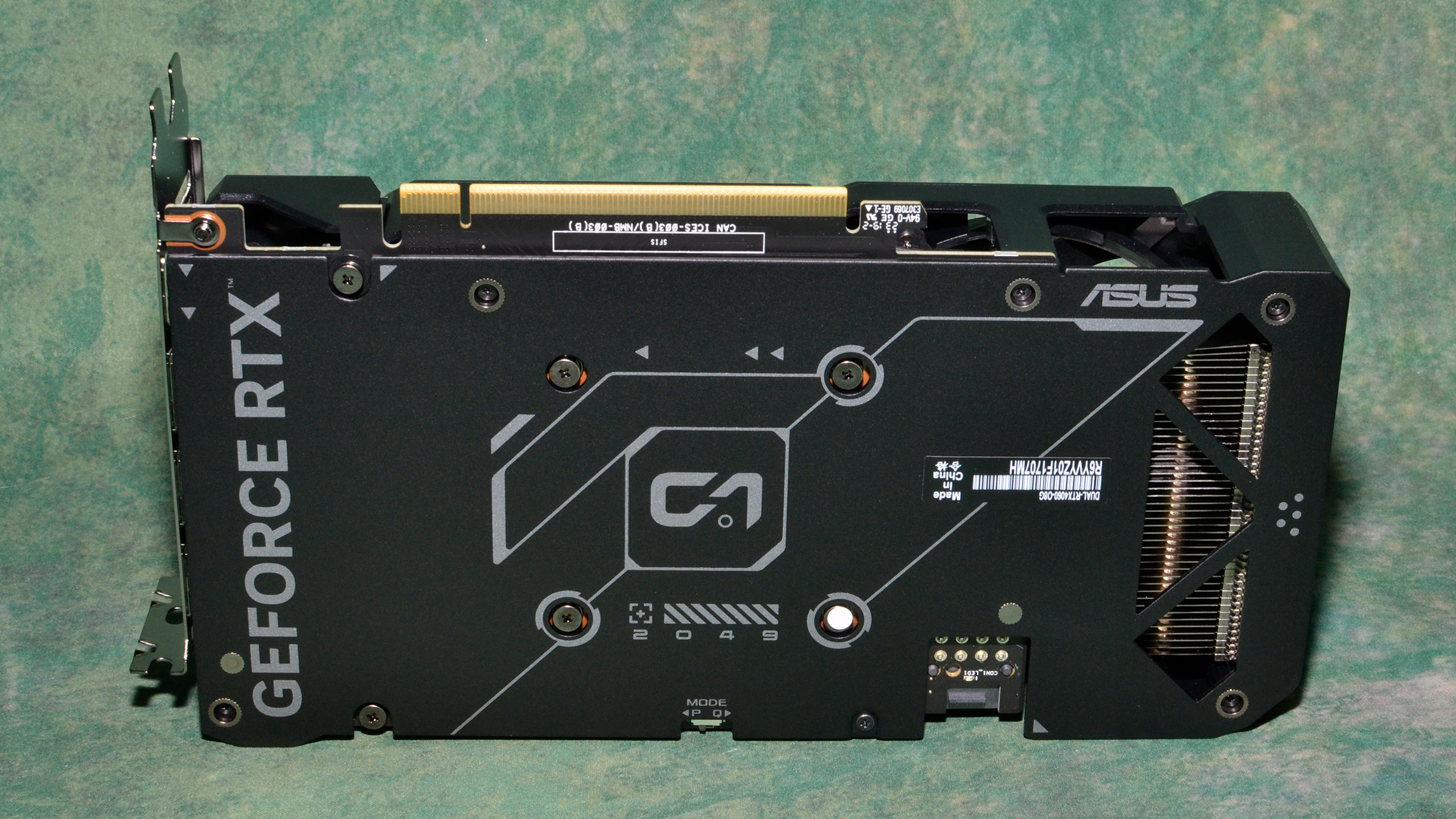
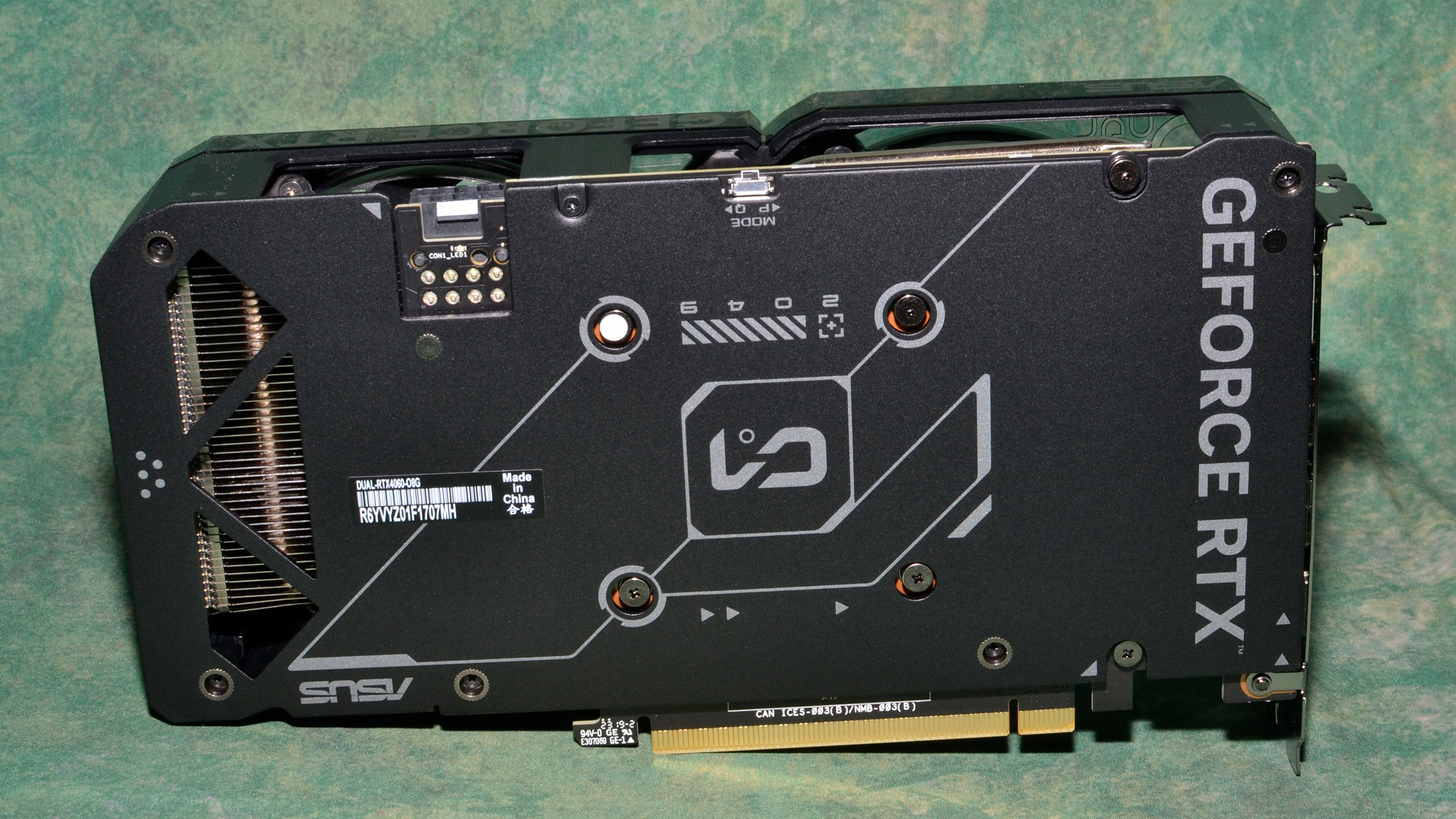
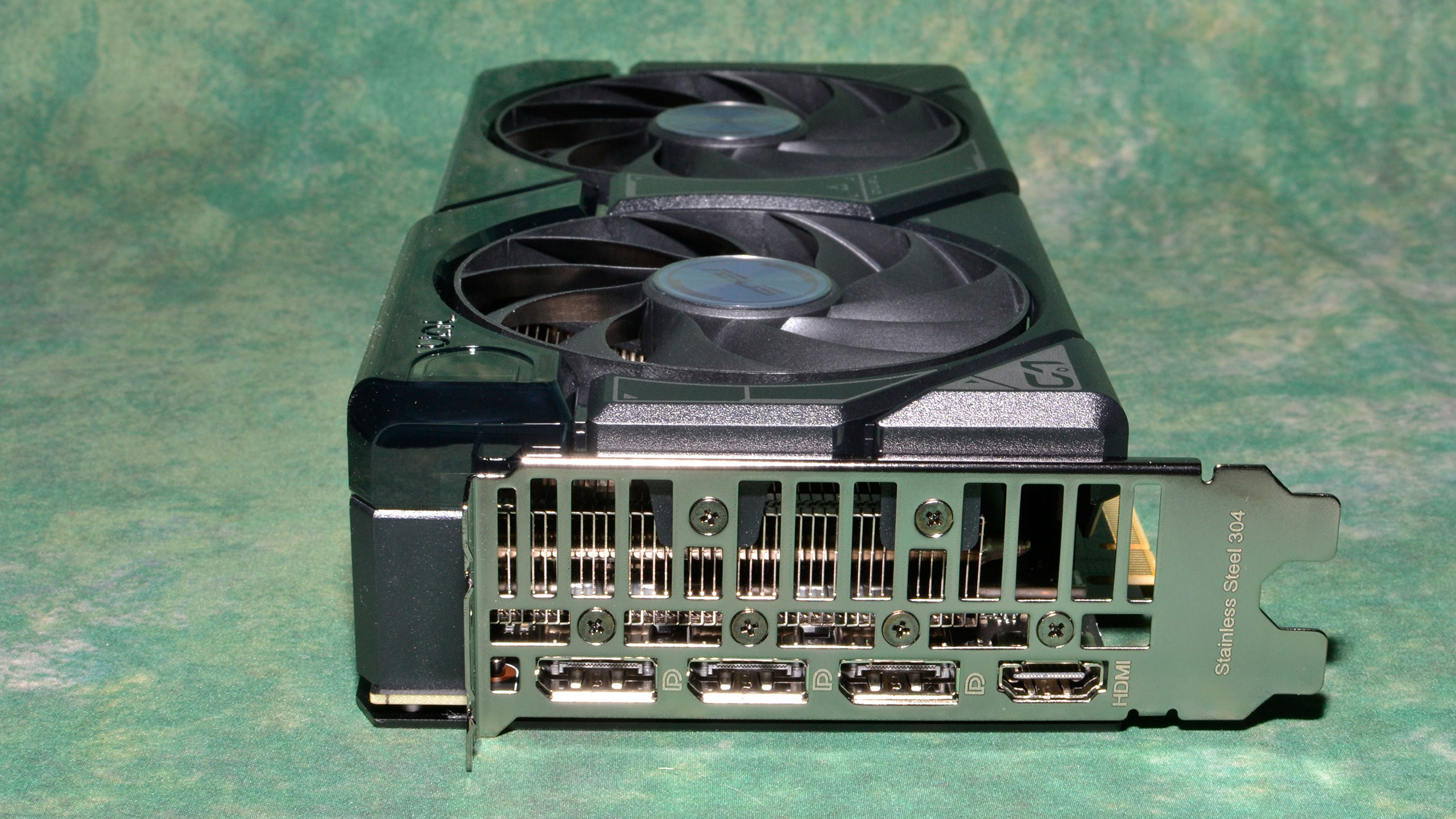
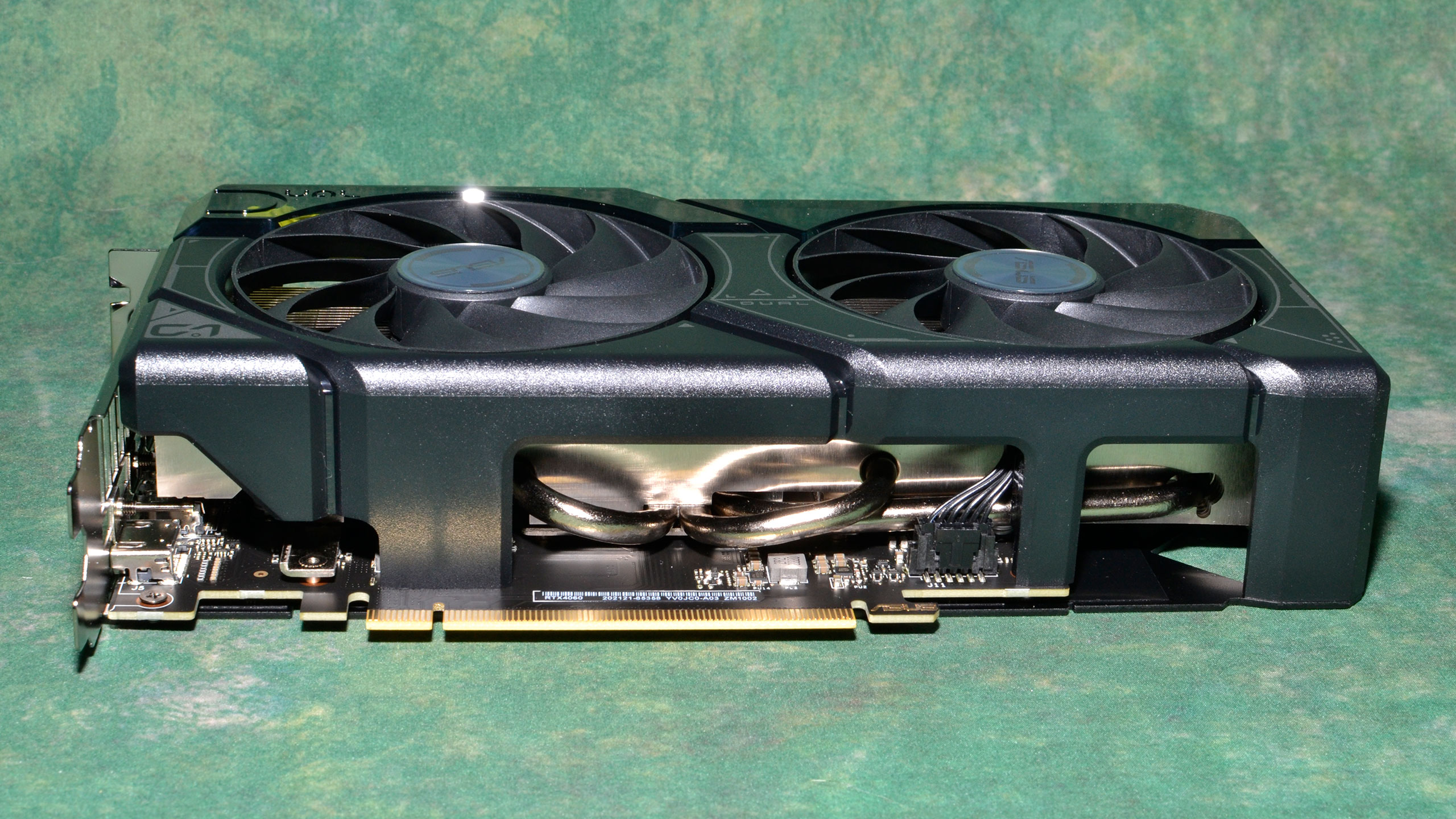
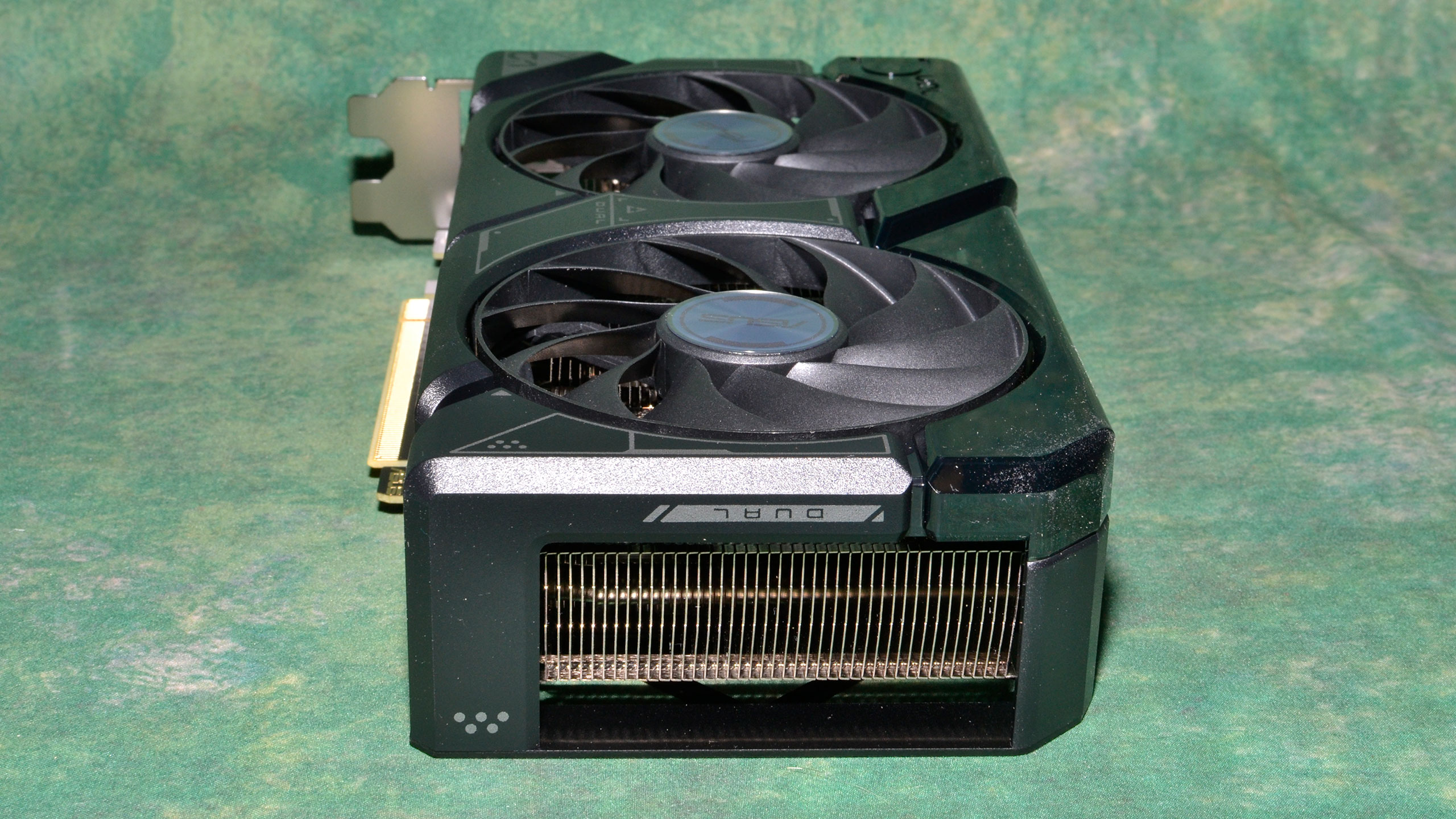
For a base model RTX 4060, there's a lot to like with the Asus design. The aesthetics are subdued, with no RGB lighting, so if you're trying to put together a "stealth-build" PC, it would be a good fit. You do get a few extras as well, which aren't normally seen with base model GPUs.
On the top, there's a switch to toggle between "quiet" and "performance" modes. It's in performance mode by default, which is where we left it. The quiet mode likely just alters the fan speed curve slightly to favor lower RPMs over lower temperatures.
Video outputs consist of the typical triple DisplayPort 1.4a and single HDMI 2.1 outputs — nothing new there. All four ports are capable of driving up to a 4K 240Hz display, using Display Stream Compression, which is what our Samsung Odyssey Neo G8 supports.
- MORE: Best Graphics Cards
- MORE: GPU Benchmarks and Hierarchy
- MORE: All Graphics Content
Get Tom's Hardware's best news and in-depth reviews, straight to your inbox.
Current page: Asus GeForce RTX 4060 Dual OC
Prev Page RTX 4060: Is 8GB of VRAM Insufficient? Next Page Nvidia RTX 4060 Overclocking and Test Setup
Jarred Walton is a senior editor at Tom's Hardware focusing on everything GPU. He has been working as a tech journalist since 2004, writing for AnandTech, Maximum PC, and PC Gamer. From the first S3 Virge '3D decelerators' to today's GPUs, Jarred keeps up with all the latest graphics trends and is the one to ask about game performance.
-
healthy Pro-teen Nvidia's marketing be like: In germany you could maybe save $132 over 4 years if you play 20hours/week due to energy costs compared to the 3060. That is hilarious and obviously the tiny 50 tier die is efficient lol.Reply -
tennis2 @JarredWaltonGPU I feel compelled to give you huge props for the stellar write-up!Reply
Only made it halfway through the article, so I'll have to come back when I have time to finish, but wow....there's so much good stuff here. I hope everyone takes the time to fully read this article. I know that can get tricky once the "architecture launch" article is done for a generation. It's nice to be able to learn some new things from a "standard" GPU review even after I've been reading reviews from multiple sites of every GPU launched for the past.....10+ years. -
lmcnabney The expectations for GPUs going back decades is that the new generation will provide performance in-line with one or sometimes two tiers above it from the prior generation. That means the 4060 should perform somewhere between a 3060ti and 3070. It doesn't. It can't even meet the abilities of the 3060ti. This card should not receive a positive review because it fails at meeting the minimum performance standard.Reply -
oofdragon Utterly crap.. can't even match a 3060Ti, but of course since that amazing accomplishment goes to the failure 4060Ti. Meanwhile anyone can get a 6700XT with 12GB VRAM for half the price. FAIL FAIL FAIL FAIL FAIL FAIL FAILReply -
Elusive Ruse Thanks for the review, however your test suite is outdated. You need to consider bringing a host of newer releases.Reply -
DSzymborski Replyoofdragon said:Utterly crap.. can't even match a 3060Ti, but of course since that amazing accomplishment goes to the failure 4060Ti. Meanwhile anyone can get a 6700XT with 12GB VRAM for half the price. FAIL FAIL FAIL FAIL FAIL FAIL FAIL
You're comparing a used GPU to a new GPU. That increased risk is a fundamental difference which has to be addressed in any comparison. -
Elusive Ruse Reply
You can get a new one around $310-$320DSzymborski said:You're comparing a used GPU to a new GPU. That increased risk is a fundamental difference which has to be addressed in any comparison. -
DSzymborski ReplyElusive Ruse said:You can get a new one around $310-$320
He's literally quoting $200 above as his point of comparison. That's a used card. -
randyh121 Reply
lol the 6700XT is nearly 500$ and the 4060 runs betteroofdragon said:Utterly crap.. can't even match a 3060Ti, but of course since that amazing accomplishment goes to the failure 4060Ti. Meanwhile anyone can get a 6700XT with 12GB VRAM for half the price. FAIL FAIL FAIL FAIL FAIL FAIL FAIL
keep lying to yourself amd-cope